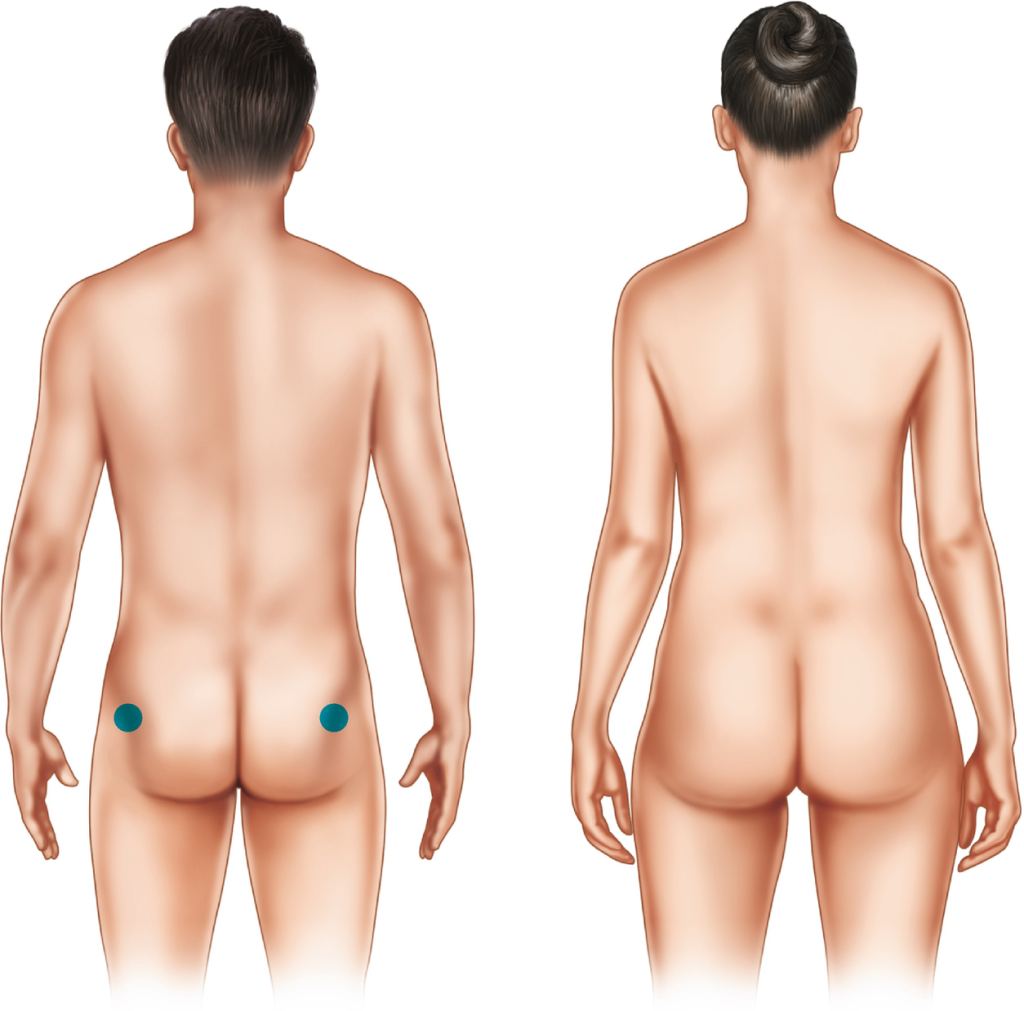Understanding Trans Body Contouring
Scope and Purpose
Transgender body contouring surgery helps align physical appearance with gender identity, including facial feminization surgeries, masculinizing procedures, and achieving a feminine physique or hourglass shape. This gender affirming surgery can be life-changing for many transgender patients. By reshaping the body through plastic surgery and cosmetic surgery procedures, it helps create a more authentic self-image.
Masculine Body Contours
For those seeking a more masculine physique, several procedures are available for trans men and transgender patients. FTM transgender body contouring often includes chest masculinization. This procedure removes breast tissue to create a flat, male chest for transgender patients. Liposuction can also help achieve a more masculine body shape by removing fat from areas like the abdomen and flanks, especially for trans individuals.
Feminizing Body Shape
Creating a feminine body shape involves different techniques. For MTF individuals, surgeries focus on enhancing curves. Breast augmentation is common, using implants or fat transfer to increase breast size as part of body feminization surgery and body contour. Liposuction and fat grafting help accentuate the hips and buttocks to achieve a feminine physique in body feminization surgery for trans men seeking a body contour.
Comprehensive Approach
Achieving optimal results requires a comprehensive approach. Weight loss and exercise play crucial roles in preparing the body for surgery, especially for trans men. Hormone therapy is also important for trans men, as it helps develop secondary sexual characteristics and body contour, complementing body feminization surgery. Surgical intervention, including body feminization surgery, then fine-tunes these changes to match the desired gender identity in trans men, focusing on body contour.
Importance of Hormone Therapy
Hormone therapy supports the surgical outcomes significantly. For trans men, testosterone therapy promotes muscle growth and reduces fat in areas like hips and thighs. For trans women, estrogen therapy encourages fat distribution to the breasts and hips, aiding in developing a feminine body shape.
Post-Surgical Care
Post-surgical care is vital for successful recovery. Patients must follow their surgeon’s guidelines closely. This includes managing pain, avoiding strenuous activities, and attending follow-up appointments.
Types of Feminization Surgeries
Brazilian Butt Lift
A Brazilian butt lift (BBL) is a popular body feminization surgery for men. It involves transferring fat from other parts of the body to the buttocks. This procedure creates a fuller, more rounded appearance. Surgeons often use liposuction to remove fat from areas like the abdomen or thighs.
Many individuals seek BBL to achieve a more feminine silhouette. The goal is to enhance curves and create a balanced look. This surgery can significantly improve self-confidence and body image.
MTF Abdominoplasty
MTF abdominoplasty, also known as a tummy tuck, helps in achieving a flatter abdomen. It removes excess skin and tightens abdominal muscles. This procedure is essential for those who have lost significant weight or have loose skin.
The surgery complements hormone replacement therapy (HRT) by refining the waistline. HRT helps soften features, but surgery provides more dramatic results. A well-defined waist enhances the overall feminine appearance.
Liposuction
Liposuction is another common transgender surgery procedure. It targets specific areas to remove stubborn fat deposits. Common areas include the abdomen, flanks, and thighs.
This surgery helps create a smoother, more contoured body shape. Liposuction works well with other procedures like BBL and abdominoplasty. The combination of surgeries can result in a more polished and feminine look.
Breast Augmentation
Breast augmentation is a key part of female gender reassignment surgery. It involves placing implants to increase breast size and shape. This surgery greatly enhances the feminine chest contour.
Estrogen therapy promotes breast development, but many seek additional enhancement through surgery. Implants provide immediate and noticeable results. Breast augmentation is often requested early in the transition process.
Facial Feminization Surgery
Facial feminization surgery (FFS) includes multiple procedures aimed at softening facial features. Common surgeries are brow lifts, rhinoplasty, and jaw contouring.
FFS plays a crucial role in aligning one’s appearance with their gender identity. These surgeries reduce traditionally masculine traits, making the face appear softer and more feminine. Many find FFS transformative for their self-esteem.
Complementary Effects with HRT
Gender affirming surgery procedures work best when combined with hormone replacement therapy (HRT). Estrogen helps develop secondary sexual characteristics like softer skin and breast tissue.
Surgeries such as BBL, abdominoplasty, and liposuction enhance these changes by creating curves and reducing masculine features. Together, they help individuals achieve their desired body shape more effectively.
Types of Masculinization Surgeries
Top Surgery
Top surgery, or chest masculinization surgery, removes breast tissue to create a flatter chest. Surgeons perform a double incision or keyhole procedure. Double incision is common for larger chests. It involves two horizontal incisions and nipple grafts. Keyhole surgery suits smaller chests. It uses small incisions around the areola.
Masculinization Liposuction
Masculinization liposuction targets fat removal from areas like hips, thighs, and abdomen. This helps in achieving a more traditionally masculine silhouette. Surgeons use cannulas to suction out fat. They may combine liposuction with fat transfer to enhance muscle definition.
FTM Abdominoplasty
FTM abdominoplasty, or tummy tuck, removes excess skin and fat from the abdomen. This procedure tightens abdominal muscles. It creates a firmer and more masculine midsection. Surgeons make an incision from hip to hip above the pubic area.
Fat Transfer
Fat transfer involves harvesting fat from one part of the body and injecting it into another. This technique sculpts a masculine physique by adding volume to areas like the pectorals or shoulders. It complements liposuction by enhancing muscle contours.
Liposuction’s Role
Liposuction plays a crucial role in body masculinization surgery. It targets stubborn fat areas resistant to diet and exercise. Common areas include the flanks, lower back, and inner thighs. Removing fat from these areas helps in creating a more masculine appearance.
Contouring for Nonbinary Patients
Tailored Approach
Nonbinary people often seek body contouring that reflects their unique gender identity. This can involve breast modification, facial cosmetic surgery, or other procedures. The goal is usually an androgynous appearance that does not conform to traditional male or female contours.
Breast modification for nonbinary patients may include reduction or augmentation. The procedure aims to achieve a neutral chest shape. Facial surgeries might soften or sharpen features, depending on the patient’s desires.
Customization
Surgeries for nonbinary individuals are highly customizable. Each patient has unique goals and needs. Surgeons work closely with patients to create a plan that matches their vision.
e may want elements of both traditionally male and female features. Others might prefer entirely neutral characteristics. Flexibility in procedures helps meet these diverse goals.
Patient-Centered Care
Patient-centered care is crucial in transgender health. For nonbinary patients, this means respecting their gender identity and preferences. Surgeons must listen carefully to understand each individual’s desires.
A successful outcome depends on this collaboration. It ensures the body reflects the person’s true self without forcing them into binary norms.
Emotional Impact
Body contouring can greatly affect mental health for nonbinary individuals. Many experience gender dysphoria, which causes distress due to a mismatch between their body and gender identity.
Surgery can alleviate this distress by aligning physical appearance with internal identity. This alignment boosts confidence and well-being.
The Sculpting Process Explained
Consultation and Planning
The process starts with a thorough consultation. Surgeons assess the patient’s health and discuss goals. They consider body type, health status, and desired changes. This helps in planning the procedures.
Surgeons create a detailed plan. They explain the steps and expected outcomes. Patients learn about potential risks and benefits.
Techniques Used
Fat grafting and liposuction are common techniques. Fat grafting involves moving fat from one part of the body to another. This helps create curves in desired areas.
Liposuction removes excess fat. It reshapes areas like the thighs, abdomen, and hips. These techniques help achieve gender-affirming results.
Grafting Details
Grafting is precise. Surgeons harvest fat from donor sites like the abdomen or thighs. They purify the fat before injecting it into target areas.
This method enhances curves and contours. It’s important for creating a feminine shape in transgender women.
Liposuction Procedure
Liposuction involves small incisions. Surgeons insert a thin tube called a cannula to remove fat. They carefully sculpt the body to achieve smooth contours.
This procedure can target multiple areas at once. It’s effective for removing stubborn fat deposits.
Recovery Phase
Recovery is crucial for success. Patients need rest and follow post-operative care instructions closely. Swelling and bruising are common but temporary.
Full recovery can take several weeks. Regular follow-up visits ensure proper healing and address any concerns.
Decision-Making Process
Choosing specific procedures depends on individual factors:
-
Body type: Determines how much fat can be harvested.
-
Health status: Ensures the patient is fit for surgery.
-
Aesthetic goals: Guides the surgeon in achieving the desired look.
Patients must communicate openly with their surgeon. This ensures realistic expectations and satisfactory results.
Benefits of Body Contouring
Psychological Benefits
Body contouring can significantly improve self-esteem. Many transgender individuals experience a boost in confidence after surgery. Achieving a feminine body contour helps align their physical appearance with their gender identity.
This alignment reduces feelings of gender dysphoria. People feel more comfortable in their bodies. Self-acceptance increases, leading to better mental health.

Emotional Benefits
The emotional benefits are profound. Transgender individuals often feel happier post-surgery. Their new body contours reflect their true selves, which brings joy and satisfaction.
Personal relationships also improve. Friends and family notice the positive change in attitude. Emotional well-being enhances social interactions.
Physical Benefits
Physically, body contouring helps achieve desired body shapes. Procedures like tummy tuck, liposuction, and thigh lifts remove excess skin and fat. This results in a more defined waistline and abdomen.
Abdominoplasty, or tummy tuck, tightens the muscles in the abdomen. Liposuction removes stubborn fat deposits. The overall effect is a smoother, more feminine appearance.
Reduction in Gender Dysphoria
Gender dysphoria decreases significantly after surgery. Many find relief from the distress caused by mismatched body image and gender identity. This reduction allows them to focus on other aspects of life.
Feeling aligned with one’s gender identity fosters a sense of normalcy. Daily activities become less stressful and more enjoyable.
Quality of Life
Quality of life improves dramatically post-surgery. With a feminine body contour, individuals feel more at ease in public spaces. They participate in social activities without fear or anxiety.
Physical health also benefits. Removing excess skin and fat can alleviate physical discomfort. Improved mobility and posture are common outcomes.
Personal Relationships
Relationships grow stronger after body contouring. Partners appreciate the increased confidence and happiness. Open communication about body image becomes easier.
Friends notice the positive changes too. Social circles expand as individuals feel more confident meeting new people.
Insurance and Affirming Surgeries
Insurance Coverage
Many insurance companies do not fully cover transgender body contouring surgeries. This can be a significant barrier for those seeking gender affirmation surgery. Insurance policies often exclude cosmetic procedures, labeling them as non-essential.
e states in the U.S. have laws requiring insurance coverage for gender-affirming care. This includes surgeries like breast augmentation or fat grafting surgeries. However, these laws vary widely by state.
Navigating Policies
Understanding your insurance policy is crucial. Start by reviewing your plan’s coverage details. Look for specific mentions of gender-affirming care or related exclusions.
If your policy does not cover the necessary surgeries, consider appealing the decision. Appealing an insurance denial involves gathering supporting documents from medical professionals. These documents should explain why the surgery is medically necessary.
Financial Aspects
Transgender body contouring surgeries can be expensive. Costs include surgeon fees, hospital charges, anesthesia, and recovery expenses.
e patients may need to pay out-of-pocket if their insurance does not cover the procedure. This can lead to significant financial strain.
Consider exploring financial assistance programs. Some organizations offer grants or low-interest loans for gender-affirming care.
Supportive Resources
Accessing supportive resources is vital when dealing with insurance denials or limitations. Legal assistance can help you understand your rights and navigate complex insurance appeals.
Organizations like the Transgender Legal Defense & Education Fund provide free legal services to transgender individuals facing discrimination.
Support groups can also offer emotional support and practical advice. Connecting with others who have gone through similar experiences can be invaluable.
Choosing the Right Surgeon
Specialized Experience
Selecting a surgeon with specialized experience in transgender body contouring is crucial. Experienced gender surgeons understand the unique needs of transgender patients. They have the skills to perform procedures like top surgery, fat grafting, and reshaping hips and shoulders. These surgeons can ensure that the results align with the patient’s gender identity.
Specialized surgeons use techniques tailored for transgender bodies. They know how to handle skin elasticity and tissue differences. This expertise helps achieve natural-looking results.
Research Credentials
Researching a surgeon’s credentials is essential. Start by checking their medical certifications and training background. Look for board-certified plastic surgeons who specialize in transgender surgeries.
Patient reviews are another valuable resource. Reading about other patients’ experiences can provide insights into the surgeon’s competence and bedside manner. Before-and-after galleries showcase the surgeon’s work quality. These images help assess if their aesthetic aligns with your goals.
Consultation Preparation
Preparing for consultations is a key step. Make a list of questions and concerns to discuss with potential surgeons. Some important questions include:
-
What is your experience with transgender body contouring?
-
Can I see before-and-after photos of similar procedures?
-
What are the risks and complications?
Clear communication during consultations ensures understanding of the surgical process. Discuss your goals and expectations openly. This dialogue helps the surgeon create a personalized plan tailored to your needs.
Evaluating Compatibility
Evaluating compatibility with the surgeon is vital. The consultation is not just about assessing their skills but also their approach to patient care. You should feel comfortable discussing sensitive topics related to gender identity and body image.
Observe how the surgeon and their staff treat you during the consultation. A supportive and respectful environment is crucial for a positive surgical experience.
Post-Surgery Care
Post-surgery care is an important aspect to consider when choosing a surgeon. Experienced gender surgeons provide comprehensive aftercare instructions. They monitor recovery closely to address any complications promptly.
A good surgeon will have a clear follow-up plan in place. This may include multiple check-ups to ensure proper healing and satisfactory results.
Final Remarks
Transgender body contouring surgery can be life-changing. It helps you align your physical appearance with your true identity. From feminization and masculinization to nonbinary options, the choices are vast and tailored to meet your unique needs.
Choosing the right surgeon is crucial. Research, ask questions, and trust your instincts. Ready to take the next step? Consult with a qualified professional today and start your journey towards a more affirming body. Your new chapter awaits!
Frequently Asked Questions
What is transgender body contouring surgery?
Transgender body contouring surgery reshapes the body to align with a person’s gender identity. It involves various procedures tailored for feminization, masculinization, or nonbinary goals.
What types of feminization surgeries are available?
Feminization surgeries include breast augmentation, liposuction, and hip enhancement. These procedures help create a more traditionally feminine silhouette.
Are there surgeries specifically for masculinization?
Yes, masculinization surgeries include chest masculinization, liposuction for a more masculine shape, and abdominal etching. These surgeries aim to create a traditionally masculine appearance.
Can nonbinary patients benefit from body contouring?
Absolutely. Nonbinary patients can customize their body contouring procedures to achieve a look that aligns with their unique gender identity.
How does the sculpting process work?
The sculpting process involves removing or redistributing fat and sometimes adding implants. The goal is to shape the body according to the patient’s gender identity and personal aesthetic preferences.
Does insurance cover transgender body contouring surgeries?
Coverage varies by insurer and policy. Some insurance plans may cover gender-affirming surgeries, but it’s essential to check with your provider for specifics.
How do I choose the right surgeon for my needs?
Look for a board-certified surgeon with experience in transgender body contouring. Check patient reviews, before-and-after photos, and consult multiple surgeons to find the best fit for your needs.





